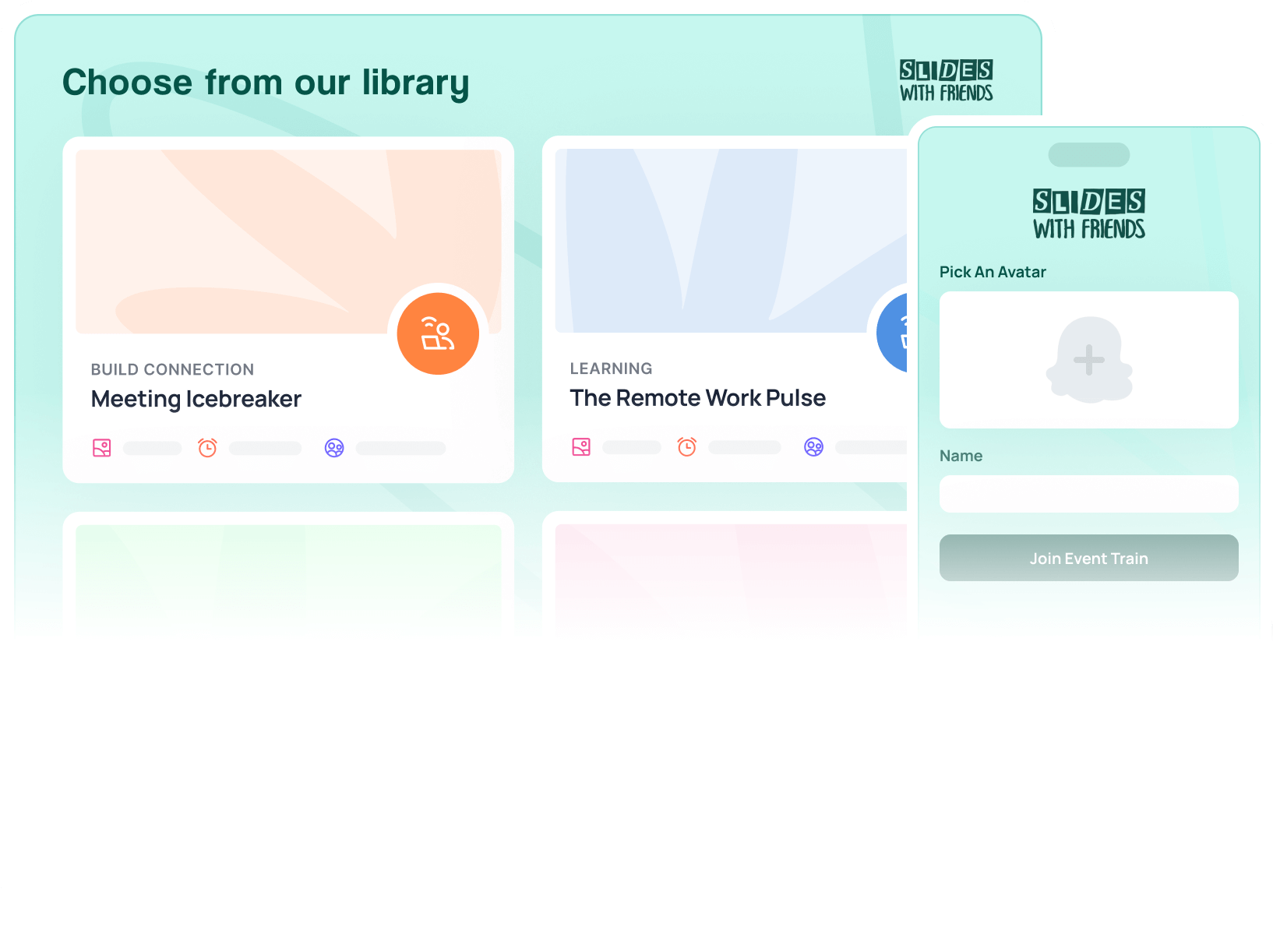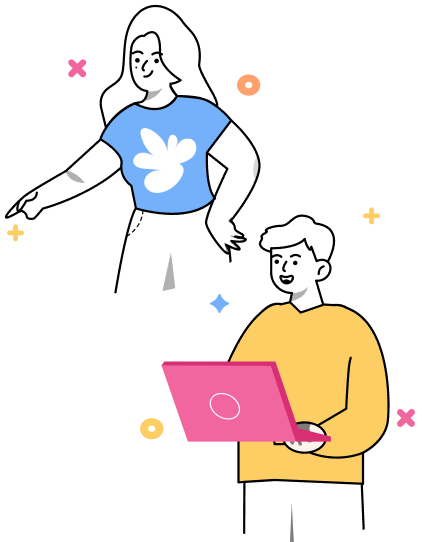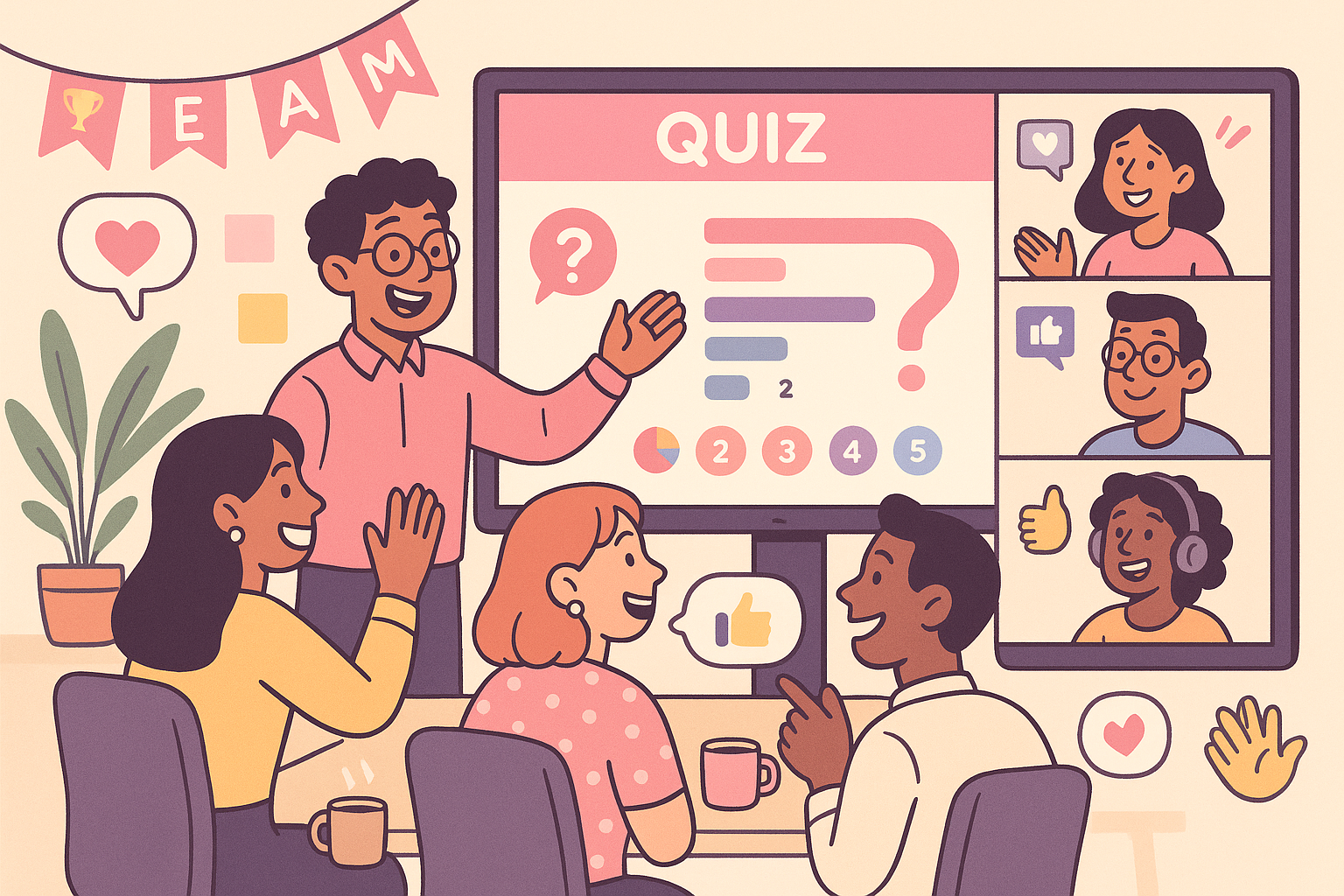8 Employee Engagement Strategies (And How to Do Them)
Engaged employees make for a better work environment. Check out these 8 employee engagement strategies, and how you can implement them.

8 Employee Engagement Strategies (And How to Do Them)
Keeping employees engaged is the way to better productivity. There are tons of strategies, from running surveys that give you a finger on the office pulse, to offering paths to advancement, to laid back team happy hours.
All of these have their places, and the more you do, the more engaged your team will be. With years of experience running engaged teams, we’ve put together a list of great employee engagement strategies that really work.
Take employee surveys
The best way to know how your employees are feeling about their life and work is by asking them.
The beauty of employee surveys is that you can tailor them based on the info you want to collect. For example, you could design a survey to check whether your employees are finding their work meaningful. Or to check if they are struggling with certain tasks. Or, again, if they are satisfied with their work-life balance.
But, many employee surveys suffer from being unengaging, often feeling dull, irrelevant, or unclear.
That’s why, at Slides With Friends, we've designed a starter deck that can help you create engaging surveys for your employees:
The real value of these surveys lies in the insights they provide. Suppose you discover that some employees are feeling unmotivated at work. This feedback can serve as a starting point to dig deeper into the root causes behind their lack of motivation. Is it due to repetitive tasks, a lack of challenging assignments, or a need for more recognition? Using these insights, you can take targeted actions to improve employee engagement.
Taking your employees' suggestions seriously shows that you value their input, making them feel heard and cared for. As a result, their engagement with your company increases, and they become more committed to its success.
Offer paths to advancement
Gallup’s State of Global Workspace 2023 reports that “The majority of the world's employees are quiet quitting.” And offers a quote from a young professional that states “"I just don't feel like there's a lot of room for me to grow internally."
It’s not an isolated incident either. Feeling hopelessly stuck at work is one of the chief reasons people burn out and quit.
In response to this alarming trend, creating clear and accessible paths for advancement within the company is more crucial than ever. Promoting from within not only addresses this issue but also brings several benefits:
- Boosts morale and motivation
- Uses existing talent
- Reduces turnover
- Encourages professional development
Internal career paths also improve your return on investment on employee training. You can devise specialized training paths and development opportunities to guarantee your employees will have the proper skills to perform in their new roles.
Celebrate your team
A positive workspace is one where employees feel recognized for their work. And what better way to show them your appreciation for their efforts than celebrating their achievements?
As this article by Great Place To Work reports: "when each employee stands an equal chance at getting a gold star for their efforts, they are 2.2 times more likely to flex their discretionary muscles and go above and beyond their regular duties.”
Dedicating time to acknowledge the hard work and successes of your employees leads to increased morale, better team cohesion, and higher productivity.
Celebrations can take various forms, from small gestures like thank-you notes or shoutouts in team meetings to larger events such as team outings or celebratory lunches. The key is to make these celebrations feel genuine and tailored to your team’s culture.
Don’t know where to start from? We built a starter deck perfect to host a fun and interactive employee celebration session:
Remember, the act of celebrating your team should be inclusive and frequent. Your employees work hard every day, or else they wouldn’t achieve important milestones. Their contributions matter, so celebrate them.
Hold your team accountable
Accountability can feel like a bit of a buzzword. Yet, it’s a key part of any employee engagement program.
Imagine an organization where employees often miss deadlines without consequences. And where there's a lack of clarity on roles and responsibilities. As a result, projects often fall behind schedule, quality suffers, and team members become frustrated.
But how do you foster a culture of accountability in your company?
It takes a few step:
- When issues arise, discuss them openly and constructively, providing clear and actionable feedback
- Clearly communicate goals, roles, and responsibilities
- Encourage an environment where employees feel comfortable discussing challenges and mistakes without fear of harsh judgment.
- Regular check-ins and progress reviews help keep everyone on track and accountable for their tasks
Without accountability, employees feel disconnected from the company's goals and values. They may become disengaged, as there is no sense of ownership or responsibility for their work, resulting in a decline in overall productivity and morale.
Spend quality time together
Did you know that spending quality time together through engaging activities can significantly strengthen team bonds and boost morale?
In its 2023 Hybrid Work Report, HubSpot reports that only 28% of remote workers felt a strong connection with their employees. The percentage rose to 36% for in-office and hybrid workers. Yet, the same report found that over 65% of the respondents cited having a close friend at work impacted their decision to stay the company.
In the realm of employee engagement, it's the quality of interactions that truly counts. Games and interactive activities provide a structured yet enjoyable environment, fostering not only camaraderie but also creativity and collaborative problem-solving.
Incorporating team-building games via platforms can be an excellent way to spend this quality time. These activities offer team members opportunities to connect, understand each other better, and build a stronger sense of team unity.
Here are a few game ideas you can try out today with our premade decks:
Scavenger Hunt
In this digital version, participants are split into teams and tasked with finding items or solving clues.
It's a race against time as teams navigate through the interactive slides to complete their mission first.
Role-playing games
Players create characters and embark on virtual adventures, making decisions and solving problems together.
The visual and interactive elements enhance the storytelling experience, making the session more memorable and engaging.
Photo sharing games
In this game, team members share personal photos based on specific prompts or themes.
It's an interactive way for employees to showcase their creativity and share a bit of their personal life with colleagues in a fun, relaxed setting.
Host Learning Lunches
Learning lunches are an innovative and informal way to foster employee engagement and professional development. Eating with other people makes us feel closer to them, as well as making the meal — and what happens around it — more memorable.
Both of these play perfectly into learning lunches, as what’s discussed becomes more notable, while also making the participants feel closer to each other.
Here are some key points to consider when organizing learning lunches:
- Topic Selection: Choose topics that are interesting and beneficial to your employees, but not too serious
- Venue and Setup: Ensure the space is conducive to learning and can accommodate all attendees comfortably
- Food Choices: It’s important to cater to various dietary preferences and restrictions. Offering a variety of options will make the event more inclusive and appreciated
- Employee Feedback: After the session, collect feedback to understand what worked well and what could be improved
Learning lunches are a great way to break up the workday with something educational and engaging. They provide an opportunity for team bonding and can improve overall employee satisfaction and productivity.
Offer Flexible Work Arrangements
Employees crave flexible work arrangements. As research from McKinsey reports, when people have the chance to work flexibly, 87 percent of them take it.
And it’s easy to see why. People have other responsibilities in their lives, like childcare or education. Flexible work arrangements allow employees to better manage their life. This adaptability leads to a healthier work-life balance, which in turn can increase job satisfaction and productivity.
From offering flexible hours to adopting remote work, from creating a hybrid work model to providing job-sharing opportunities, there's no shortage of options for organizations to accommodate employees' desire for flexibility in their work arrangements.
When employees have the autonomy to fit their work around their life, rather than the other way around, it fosters a sense of trust and respect in the workplace. This approach not only enhances employee well-being but also contributes to a more engaged and loyal workforce.
Organize Group Volunteer Initiatives
Organizing group volunteer initiatives is an effective way to enhance employee engagement and foster a sense of community within your organization.
As Harvard Business Review reports, many studies have shown that volunteer programs boost productivity, increase employee engagement, and improve hiring and retention. Plus, they provide employees with a sense of purpose and fulfillment, which can translate into higher productivity and a more positive workplace environment.
Short on ideas for group volunteer initiatives? Here are a few ones to get you started:
- Community Clean-Up: Organize a day for employees to clean a local park or beach. It’s a simple yet effective way to contribute to the environment and foster teamwork.
- Food Bank Support: Collaborate with local food banks to help sort and package food for those in need. This can be a powerful team-building exercise and a way to give back to the community.
- Skill-Based Volunteering: Use your team’s professional skills to benefit nonprofits or community organizations. For example, IT professionals could help a charity improve their website.
- Educational Outreach: Partner with schools or educational programs to mentor or teach skills to students, providing valuable learning experiences for both employees and students.
By investing in employee volunteer programs, you can also enhance your brand image and attract talent who value corporate social responsibility.
Overall, group volunteer initiatives represent a win-win scenario, benefiting the business, its employees, and the community.
Wrapping Up
In conclusion, these eight strategies for employee engagement, ranging from conducting tailored surveys to organizing group volunteer initiatives, offer a diverse approach to creating a vibrant and fulfilling workplace. Each method not only enhances employee satisfaction and productivity but also contributes to a positive organizational culture.
By implementing these tactics, you're investing in a supportive and dynamic work environment that values growth, flexibility, and community involvement, leading to a more engaged and committed workforce.


Ready to ditch the dull, and run team sessions that people will actually enjoy?
Get started with a Slides with Friends deck in no time. We’ve got all the interactive features you need in one easy-to-learn, easy-to-set-up tool.















